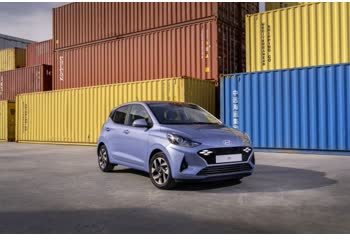Everything you need to know about specifications and performance - Kia Picanto 2020 - 1.0 (67 Hp)

Overview:
What is the engine capacity of a Kia Picanto 2020?
The engine capacity of the Kia Picanto 2020 is 998.
Kia Picanto 2020 How many horsepower?
The engine power of the Kia Picanto 2020 is 67 Hp @ 5500 rpm..
What is the Kia Picanto 2020 engine?
Kia Picanto 2020 engine is G3LD. (Click to see other cars using the same engine)
How much gasoline does a Kia Picanto 2020 consume?
The Kia Picanto 2020 consumes 4.2-4.5 liters of gasoline per 100 km
What is the recommended oil for a Kia Picanto 2020 engine?
The recommended oil for a Kia Picanto 2020 car engine is 0W-20.
What type of camshaft transmission system is used in a Kia Picanto 2020 engine?
chain is used to transmit motion.
General:
Engine:
Performance:
Space:
dimensions:
Powertrain, Suspension and Brakes:
See also

Other generation.
Its production began in 2015 until 2017

Same engine. (G3LD).
Its production began in 2023 until 2024

Write a comment